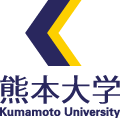1.Viruses Under Investigation in the Lab
HIV-1 (Human Immunodeficiency Virus Type 1)
HIV is one of the three major infectious diseases worldwide with more than tens of millions infected people globally. Without proper treatment with anti-retroviral drugs, infected individuals develop a deadly condition called AIDS. Once infected, it is extremely difficult to eliminate the virus from the body, resulting in the individual having to continue taking anti-retroviral drugs for his lifetime. While treatment can delay or prevent the onset of AIDS, there are still various issues of concern such as increasing medical costs and AIDS-unrelated health issues. Thus, a radical cure for the virus is highly desired and we are actively pursuing this goal.
HTLV-1 (Human T-cell Leukemia Virus Type 1)
HTLV-1 is a pathogenic retrovirus known to cause adult T-cell leukemia (ATL), a cancer of infected T cells. This infectious disease has affected many people in Japan, with a particular high endemicity in Kyushu and Okinawa, resulting in Japanese researchers, including those from Kumamoto University, to be the leading researchers in the field. Similar to HIV-1, HTLV-1 is also extremely difficult to be eliminated from the body and becomes intractable once ATL develops, thus safe, highly effective countermeasures against the virus is urgently needed.
SARS-CoV2 (Severe Acute Respiratory Syndrome Coronavirus 2)
Additionally, in view of the global pandemic, we are also focusing our research on SARS-CoV2. Utilizing the methods and techniques we developed in retrovirus research, we aim to contribute to the monitoring of circulating mutant strains by collaborating with the local government. So far, as part of our social responsibility, we have analyzed more than hundreds of samples in Kumamoto without receiving any additional funding or incentive from the local government and the results have been reported to the local government. As sequencing the whole genome is a laborious and costly method, we are currently focusing on developing new, alternative methods to monitor mutant viruses.
To conclude, our research effort focuses on understanding the pathogenic mechanisms of human retroviruses which are difficult to eliminate from the body and causes intractable diseases as well as developing new diagnostic methods to detect these viruses. We are working hard every day to one day hopefully achieve our goal of overcoming human retroviral infection.
2.Research Methodologies: Genomics and Transcriptomics
We will now introduce the research methodologies utilized in our lab. As clearly stated in the name of our lab, the Division of Genomics and Transcriptomics, our research aims to elucidate the pathogenic mechanisms of viral infections and to establish new diagnostic methods by examining the DNA and RNA of the virus or host.
Simply put, we mainly examine the DNA and RNA present in cells infected with the viruses. DNA is an important molecule in all lifeform, written using codes called nucleotides, which carries information for all basic life processes. Similarly, viruses also utilizes DNA and RNA to store genetic information.
In our lab, we aim to uncover novel, breakthrough research findings, which otherwise not identifiable using conventional research methodologies, by analyzing the viral and host DNA and RNA using advanced research methods with high accuracy.
Some of the advanced research techniques used in the lab includes next-generation sequencing, single-cell analyses and bioinformatics approach. Our lab is fully equipped with all the necessary equipment to perform such advanced techniques.
3.Fostering of Internationally Active Investigators
The unique feature of our lab is focus on training the next generation of internationally active investigators. The Joint Research Center for Human Retroviruses Infection, which our lab belongs, is accepting the master course and PhD course students and provides graduate education. In the present, motivated young investigators who are from diverse country are enrolled as graduate students or researchers in our lab. Meetings in the laboratory are conducted in English, and we aim to provide students with the experience, knowledge, and ability to write papers for international journals and present and discuss their research at international conferences. We also provide support for travel expenses and participation in academic conferences so that students can actively challenge the stage of international presentations without worrying about the financial burden.
By being actively involved in the above-mentioned advanced medical and life science research methods, graduate students can become proficient in them, and the entire laboratory supports the development of next-generation research leaders who will lead the next generation of research.
4.Interdisciplinary Research
As described in our website, we promote Interdisciplinary research with domestic and international collaborators. In order to be accepted for publication in an internationally acclaimed research journal the huge experimental data with sophisticated analytical techniques is required. To realize that, we are developing research activities such as discussion and collaboration with investigators in other fields positively. We aim to make outstanding achievements in medical development by incorporating with new perspective.
Further, the chance of interdisciplinary research is important to generate the novel research fields. We also expect making the network of young investigators by encouraging the interaction of other collaborators. Actually, we have been actively applying for research funds for domestic international joint research projects, and have realized such activities by receiving their adoption.
We look forward to the participation of motivated young researchers who sympathize with the principle of our research activities.
